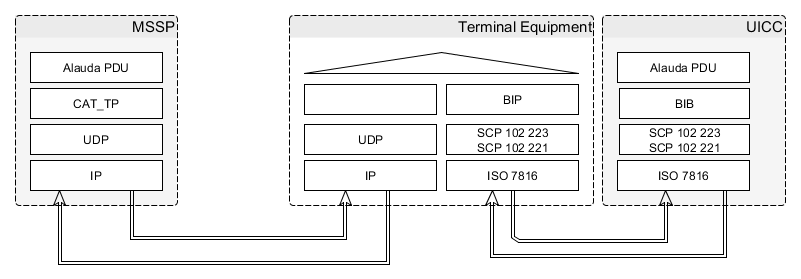Some people have questioned if the SMS bearer provides a good user experience and if it is based on a long term technology for Mobile ID. In this blog we try to study this issue and what improvements other wireless communication technologies could provide.
The Challenge
A key issue with the SMS-based Mobile ID is that sometimes Mobile ID uses irritatingly slow wireless communication. This is probably the reason for people’s concerns.
This seems to be related to two circumstances:
- the first incoming SMS takes a long time (has high Mobile Terminated-latency) and
- if response consists of multiple messages, sending several response messages takes too long (has low Mobile Originated-speed).
Therefore, people have started to look for alternative transport methods for Mobile ID. Let’s check what these are all about and start with the SMS as a bearer.
SMS (Short Message Service—Point to Point)
Mobile ID uses SMS-transport which is the most common transport method when communicating with the UICC card. Short Message Service uses a store-forward protocol and it utilizes the benefits of each mobile technology: low latency in 3G/4G networks and excellent network coverage with 2G technologies.
Additionally SMS is a low cost mature technology and uses vanilla network components like SMSCs. The newest technology alternatives can be defined as the following.

Figure 1 SMS-PP Transport for Alauda
Alternative Transport Methods
By the ETSI Release 9, there are now several standard methods to communicate with the UICC. These mechanisms can be used also to trigger a Toolkit Application and communicate with an applet or to manage the card remotely (Remote Application Management). We split these methods into two groups:
- Unstructured Supplementary Service Data (USSD) – sessions
- BIP transport – opportunity for IP-communication
- Card Application Toolkit Transport Protocol (CAT_TP)
- HTTP protocol and pre-shared key TLS security Over-The-Air.
- ETSI TS 102 226 over TCP/IP
The first technology uses USSD and the other, BIP, uses SCWS style communication. Let’s review both groups:
USSD (Unstructured Supplementary Service Data)
USSD connection creates a single interactive data communication session once the connection is established. USSD technology is basically direct packet data connection (182 character packets). Some operators think that USSD has only minor differences with SMS and do not provide both services.
Benefits:
Communication over established session is fast. Sending multiple packet responses is fast.
Drawbacks:
Session establishment is as slow as the first SMS-PP
The next alternative is the IP-communication.
BIP (Bearer Independent Protocol)
BIP is a mechanism used by some OTA services. The OTA server requests UICC card to open the best bearer channel back to OTA. BIP depends on UICC and handset capabilities. The UICC + SCWS and the handset device exchange HTTP data packet over TCP/IP or over BIP, depending on what is supported by both devices. Today, the BIP is used to tunnel the data.
The most advanced IP-connections are used by NFC applications. NFC requires that the OTA session is initiated using a push message from the OTA server, normally with a traditional OTA SMS. Therefore, NFC applications require a both IP and SMS-PP for OTA-transport.
Benefits:
Communication over established session is fast. Sending multiple packet responses is fast.
Drawbacks:
Session establishment is as slow as the first SMS-PP
Let’s focus on some specific IP-aware technologies and try to identify what issues these technologies try to solve.
SCWS (Smart Card Web Service)
SCWS technology provides fully-fledged mobile IP infrastructure. Large bandwidth, open Internet protocols, client-server architecture and UICC-based OTA clients will improve the ability to successfully implement OTA solutions.
Benefits:
- higher delivery capacity,
- higher delivery success rate,
- improved scalability, and
- ability to dedicate resources to critical use cases.
Drawbacks:
Session establishment is as slow as the first SMS-PP.
CAT_TP
CAT_TP is just another BIP application. The communication bearer solution is the same as for any technology using BIP.

Figure 2 CAT TP Transport for Alauda
It looks like the transport method is not the real solution for the issue. Do we have any other options?
Other Alternatives
How GSMA MobileConnect does the fast communication?
Basically MobileConnect service uses the same SMS-PP OTA channel to UICC as the Mobile ID service. The only difference is that it tries to speed up UICC card interface communication and use single SMS messages without need for message concatenation. Mobile Connect does not actually use faster bearer but just simplified user dialogs.
Improved Mobile ID over SMS
It seems that Mobile ID can be optimized in the same way as MobileConnect does it. We just simplify communication and signature messages.
Solutions for Issue 1: The first MT SMS is slow
- Increase Mobile ID SMS service priority – do not store-forward messages
- Use 3G or LTE networks when available
- Send small messages – check what is really needed to send
Solutions for Issue 2: Sending multiple MO messages is slow
- Use 3G or LTE networks when available
- Send smaller response messages – check what is really needed to send
Summary
In this blog we tried to find if some IP-technology could provide a quick improvement for SMS based Mobile ID solution. We did not find any real benefits using new bearer technologies for Mobile ID.
Instead we found that the improved solution using SMS is the simplest way to speed up Mobile ID communication. It provides amazingly good results in a real 3G network:
- Average Mobile ID authentication (AP authn to AP accept): 8 seconds
- Average Receipt after authentication (AP auth to Receipt): 12 seconds
Using SMS as Mobile ID bearer also provide the following benefits, which are not available in BIP / TCP communication:
- SMS works with 2g/3G/4G/LTE networks
- SMS works with all handsets
- SMS can be used inside buildings and far from base stations.
The SMS bearer just works and there is no better bearer for Mobile ID.
